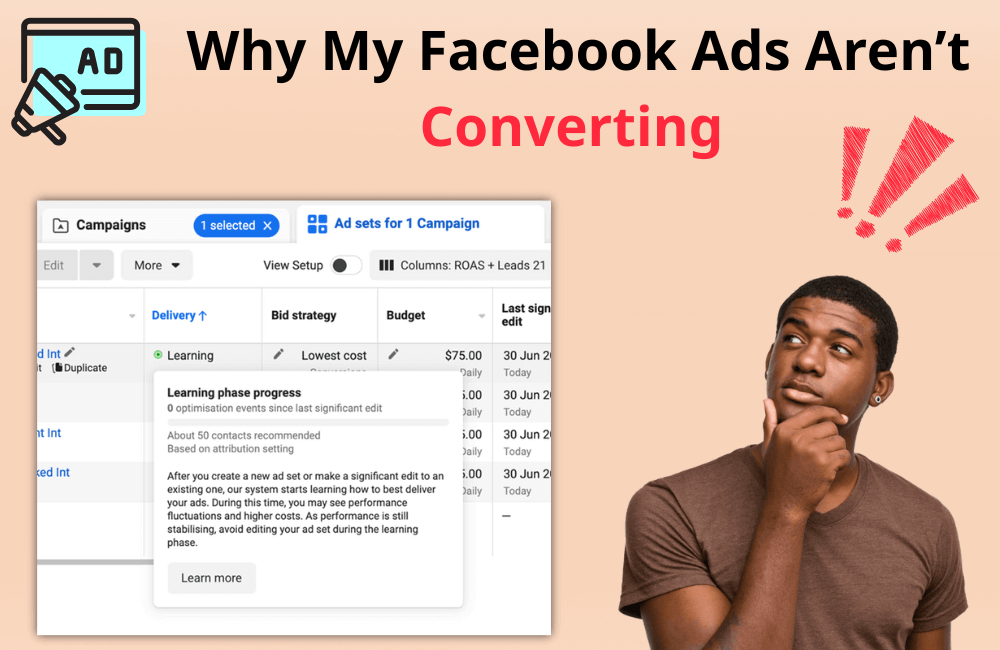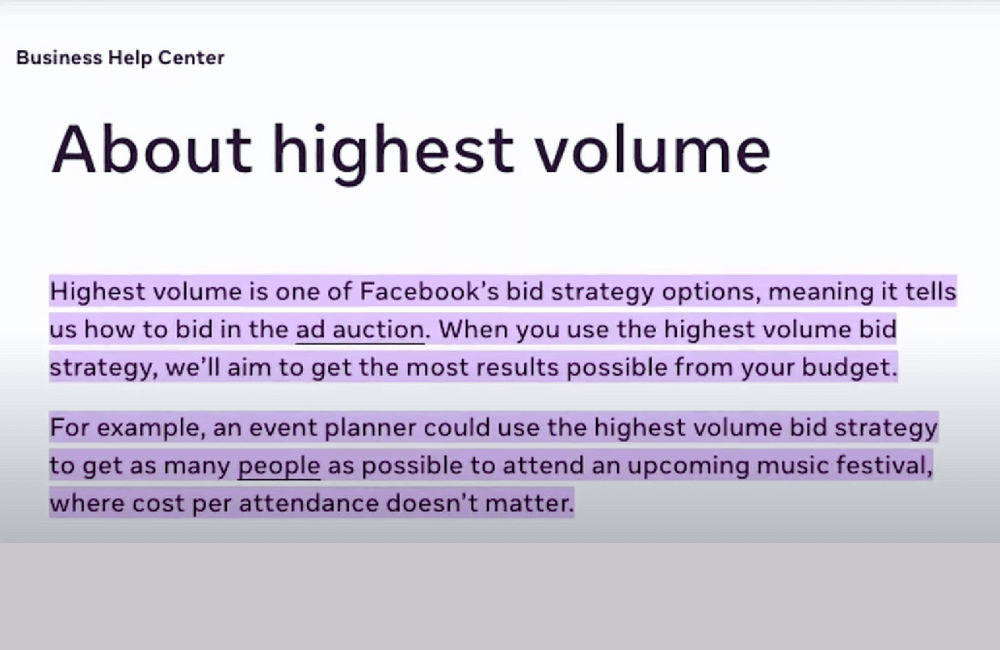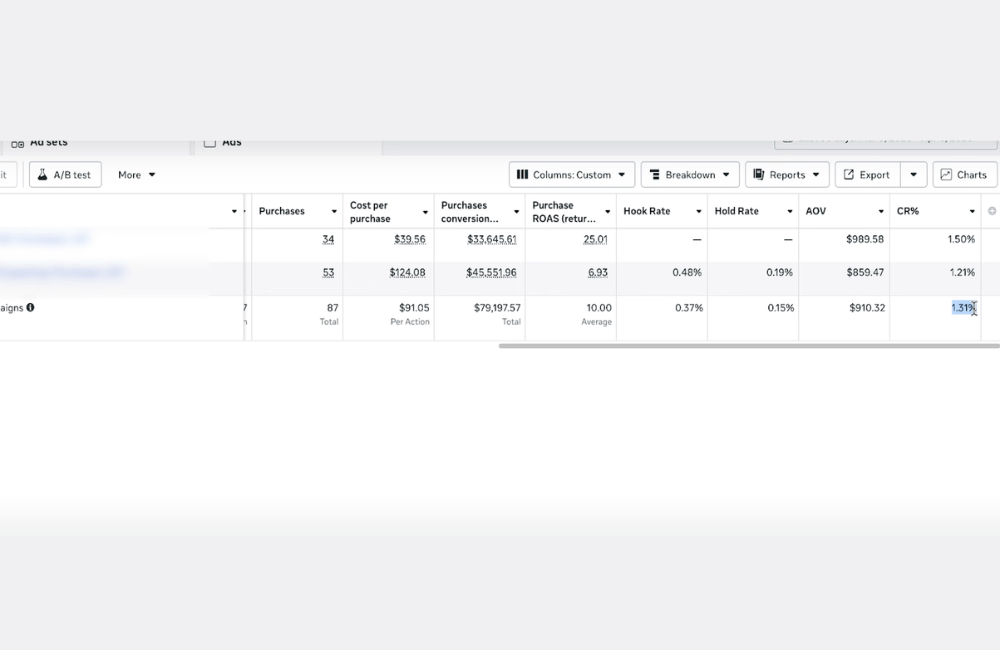Why My Facebook Ads Aren’t Converting (And How to Fix That)

When first starting to run ads, the campaign lifecycle for advertisers often unfolds as follows: Initially, the ad performs very well, yielding positive results. If everything continues to go well, I will boldly increase the budget to boost effectiveness. But then, almost overnight, all conversions suddenly stagnate, performance plummets, and never returns to the original level. If you are also tired of Facebook ad campaigns suddenly losing performance and ROAS plummeting, then in this article, BlackHatWorld will break down the reasons why Facebook ad campaigns have no conversions!
As a premium Facebook partner with over 11 years in the market, Black Hat World owns a powerful advertising account system, with diverse time zones, currencies, and countries. We have a team of experienced Facebook ads experts across various industries, with a deep understanding of platform algorithms and the nuances of each market.
With more than a decade of accompanying businesses, Black Hat World has provided comprehensive advertising solutions, supported the implementation of thousands of successful campaigns, and brought impressive revenue figures, affirming its position as a reputable agency in the field of Facebook ad account rentals.
Why My Facebook Ads Aren’t Converting
Here are the common reasons why your Facebook ad campaigns do not bring the desired results:
Your ad set budget is too low

From our experience, if each ad set does not have enough budget to exit the learning phase, its effectiveness will significantly decrease. The minimum budget is calculated with the formula: CPA × 50 conversion events ÷ 7 days, or CPA × 7.14.
Lacking unified data
If you don’t achieve enough conversion events (at least 50 per week), Meta cannot optimize. This is often caused by a low CTR, low traffic, or a poor conversion rate, which is a sign that your ad content is not engaging enough.
Changing too frequently
Note that every time you adjust the target or change the content, the learning phase will reset. Meta needs 7 days to reach 50 conversions, so be patient and avoid making constant changes. Additionally, if you turn off ads too often, Meta will predict them as ineffective. Unless there is a reason like an expired sale or a budget overage, you shouldn’t turn off the ad set.
Allocating too much budget for Remarketing
Remarketing is becoming less effective than before due to data loss. You should focus on acquisition campaigns (broad targeting, excluding past customers) and only use DPA to remarket products that have been viewed.
Incorrectly optimizing the attribution model.
“View-through attribution” can easily inflate ROAS data. Advertisers should switch to 7-day click-only to increase new customers and quality traffic.
Not excluding customers who have already purchased
Not excluding them will cause the algorithm to spend the budget on old customers. Therefore, you should define the churn period (e.g., 100 days) and sync the customer list with Meta.
Incorrect Conversion API setup
In our experience, server data (blue) should be higher than pixel data (dark blue) to avoid data loss and remove duplicate events.
Unrealistic target ROAS
If operating and product costs are high, the expected ROAS will be difficult to achieve. Advertisers should keep ad spend at around 20% of revenue.
Poor inventory management
Most newcomers often fail to stock enough products during peak seasons (like Black Friday), which results in lost revenue opportunities.
Unsystematic content production process
If your ad content lacks both quantity and quality, it makes the campaign difficult to convert.
Lack of creative diversity
Repeating too many similar ads will limit your campaign’s ability to reach new customers.
Always using “highest volume”

Advertisers should use the Highest Volume. If the strategy ignores CPA and ROAS, you will easily waste budget. Therefore, try a cost cap, a bid cap, or ROAS goal
Tips to fix low-converting Facebook ads
To fix slow-converting Facebook ads, you can refer to the methods that BHW has implemented. Specifically:
Ad optimization
For effective ads, you need to ensure:
- The campaign is set up correctly and targets the right potential customers.
- If you set up a reasonable CPC, it helps attract quality traffic to the website.
For example, comparison:
- Brand A: budget $8,000, CPC $1.6, add to cart cost $2.47, checkout cost $6, purchase cost $91, ROAS 10x, AOV $910.
- Brand B: budget $75, revenue $325, 8 orders, CTR 2.37%, CPC $0.42, cost per order $40, ROAS 2.42x, AOV $98.
→ Although brand B had better CTR and CPC, it still had a low ROAS due to the low AOV.
Based on our experience, key metrics to track include:
- CTR and CPC: A high CTR and low CPC mean ads are distributed more, at a lower cost, and with a better conversion rate.
- Quality ranking, engagement rate ranking, and conversion rate ranking: If these are average or above average, the ad is of good quality.
How to improve BHW’s ads:
- Optimize Facebook adcampaign structure.
- Upgrade ad content (copy), images/videos (creative), and offers
Optimizing Website

The website directly affects the conversion rate (CR). Therefore, you need to pay attention to three factors:
- The add to cart rate
- The checkout rate
- The conversion rate.
Standard CR level:
- Average: ~1%
- Good: ≥ 2%
Real-world examples:
- A brand with a 10x ROAS: a 1.31% CR with a high AOV is still effective.
- A new brand: a 1.16% CR requires website improvement.
- A seasonal brand: a ~2.71% CR, but the CPC increases, and the CTR decreases, which leads to a decrease in ROAS.
How to improve CR:
- Customer retention marketing: Use SMS and email marketing to collect information.
- Create urgency: Offer limited-time promotions.
- Professional design: Ensure brand consistency to build trust.
- Social proof: Use customer reviews and feedback.
Rebalancing the business budget.
When rebalancing your business budget, you have three important factors to focus on:
- AOV (average order value),
- Profit margin
- LTV (customer lifetime value)
Optimization methods:
- Increase AOV by bundling products.
- Increase LTV to spend more on acquiring new customers.
- Reduce shipping and warehousing costs.
- Buy in bulk to get discounts from suppliers.
When AOV and LTV are high, you can accept a higher CPC and still scale your ads profitably.
Apply Concept Ads
You should target the group of customers who are not ready to buy yet (97% of the market):
- Information gathering mode: They know the problem, know some solutions, and are in the process of researching.
- Problem aware mode: They know the problem, but don’t know the solution yet.
Advertisers should use concept ads to orient and change perceptions instead of selling directly. For example:
- Compare Facebook ads vs YouTube ads to highlight Facebook’s advantages.
- Compare Facebook ads vs Organic Instagram to emphasize speed and effectiveness.
Based on our observation, concept ads last longer, are easier to expand, and maintain better profitability. For the problem-aware group, you should:
- Explain why your solution is the best.
- Help them be aware of the available solutions.
The reason why Facebook ads do not convert is not always due to the product or market but often stems from campaign optimization, audience selection, and budget allocation. When you understand the cause and apply the correct solution, you can completely restore performance, increase conversion rates, and turn Facebook ads into a sustainable profit channel for your business. We wish you a successful application!
Frequently asked questions
Not necessarily. A good product is a crucial factor, but ad effectiveness also depends on how you optimize content, choose your audience, and set up the campaign. Even high-quality products can fail if the ads are not properly directed.
Typically, you should monitor data during the first 3–5 days to evaluate performance. If the conversion rate is low or the cost per customer is high, quickly adjust the audience, content, or ad format to avoid wasting your budget.
💬 Contact now for free consultation from BHW!
- Website: https://vi.blackhatworld.io/
- Telegram: @bhw_agency
- Whatsapp: +84819001811
- Wechat: bhwagency
- Email: [email protected]
This article is also available in other languages: